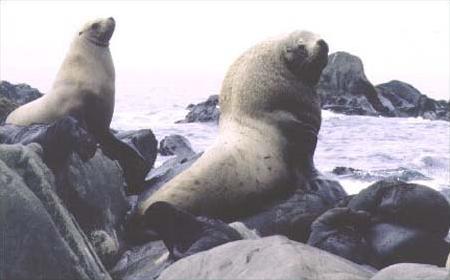Facts About Northern Sea Lion
The Steller sea lion, often referred to as Steller's sea lion, is a captivating marine mammal currently classified as near-threatened. Inhabiting the northern Pacific, this species is the largest of the eared seals and is named in honor of the naturalist Georg Wilhelm Steller.
These sea lions present an impressive sight, with adults showcasing a lighter coloration. Males are significantly larger than females. They are skilled hunters, preying on a wide range of fish and cephalopods.
Their habitat extends from Russia's Kuril Islands to the Gulf of Alaska, reaching as far south as central California. They flourish in the coastal waters of the subarctic region, alternating between water and land. For activities such as reproduction, rearing pups, molting, and resting, they gather on isolated islands.
Although Steller sea lions are apex predators, they do have natural enemies, including killer whales and sharks. Communication is vital for them, and they utilize vocalizations both on land and underwater, primarily to maintain contact between mothers and their pups.
Historically, these sea lions were hunted for their meat and other products. In recent decades, their numbers have dwindled, particularly among the western stock around the Aleutian Islands. This decline is attributed to several factors, including overfishing, predation, changes in prey species availability, disease, and pollution. On a more positive note, the eastern population of Steller sea lions has experienced a significant rebound, resulting in their removal from the U.S. Endangered Species List in 2013.
The Steller sea lion's role in the marine ecosystem, along with its interactions with humans, has made it a central focus for scientific research and conservation efforts. Protecting these remarkable animals is crucial, given their ecological significance and the various threats they face.

 Mongolia
Mongolia